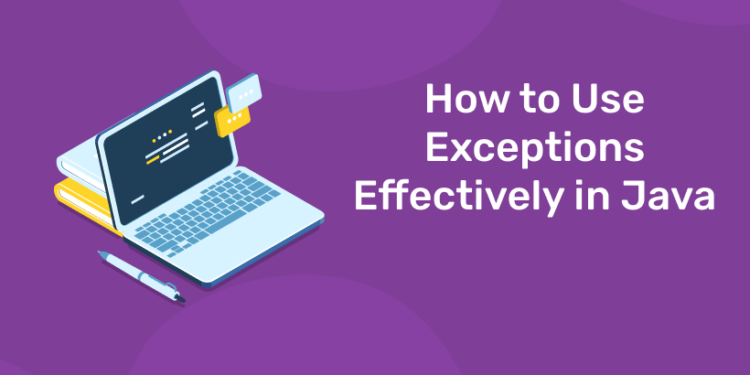Exception handling is an important part of the Java language, but it’s often misunderstood. There are many ways to handle exceptions and different teams have their own set of rules about how and when exceptions should be thrown. This guide aims to explain the different approaches, when to use them and how they can help you as a developer avoid bugs in your code.
Keep reading to know more about effective java exceptions here!
Best Practices to Handle Exceptions in Java
Following are the ways of handling exceptions in Java:
- Clean Up Resources in a Finally Block or Use a Try-With-Resource Statement
In Java, it is quite common that you use a resource in your try block, like an InputStream which you need to close afterward. A common mistake when writing such code is to close the resource at the end of the try block. The problem is that this approach seems to work perfectly fine as long as no exception gets thrown. All statements within the try block will get executed, and the resource gets closed.
The try block should contain the code that has a chance of throwing an exception. The finally block contains the clean up code that should be executed whether an exception was thrown or not. The try-with-resources statement ensures that all resources are closed, even if your program is interrupted unexpectedly.
Learn Coding in your Language! Enroll Here!
- Prefer Specific Exceptions
The more specific the exception is that you throw, the better. Always keep in mind that a co-worker who doesn’t know your code, or maybe you in a few months, need to call your method and handle the exception.
- Document the Exceptions You Specify
Exceptions should be documented and handled whenever possible. An exception message in an alert is not sufficient documentation; the developer of the method needs to know why the caller should avoid or handle the exception.
So, add a @throws declaration to your Javadoc and that will describe the situations that can cause the exception.
- Throw Exceptions With Descriptive Messages
The exception message describes the problem. It should, therefore, describe the problem as precisely as possible and provide the most relevant information to understand what happened at that time.
Learn to code from industry experts! Enroll here
- Catch the Most Specific Exception First
The exception classes in Java are organized into a hierarchy. Some of the most frequently used exceptions are subclasses of the RuntimeException class and inherit many useful properties.
The biggest problem that you can run into when catching these exceptions is that only the first catch block that matches an exception gets executed. To solve problems caused by this behavior, always catch the most specific exception class first, followed by any less specific catch blocks further down the list.
Know more about exception hierarchy in java by reading below!
- Don’t Catch Throwable
Throwable is the superclass of all exceptions and errors. Using it in a catch clause will not only catch all exceptions, but also all errors. Errors are thrown by the JVM to indicate serious problems that are not intended to be handled by an application.
Typical examples for that are the OutOfMemoryError or the StackOverflowError. Both are caused by situations that are outside of the control of the application and can’t be handled.
In order to catch an exception that occurred in your code, it is important to identify the cause. Without knowing what went wrong and by which piece of code, it can be quite challenging to try to fix the problem. This also applies when you throw an exception from your API: If you do not provide enough context or give a hint that this could mean something unexpected, your users will have even more problems than they already had before.
This article helps you to gain complete knowledge regarding the best practices to handle java exceptions. It is essential to have complete knowledge of it because, as we have discussed, this topic is pretty hard for both beginners and experienced developers. A well-prepared developer will consider a lot of factors before writing exception handling code properly from scratch.
Learn to code from industry experts! Enroll here
Entri provides video classes as well on various important topics by the excellent faculties. One will get revision modules, monthly tests based on the classes. Entri provides an excellent platform with full-length mock tests including previous year question papers. It also gives you access to clarify your doubts.












